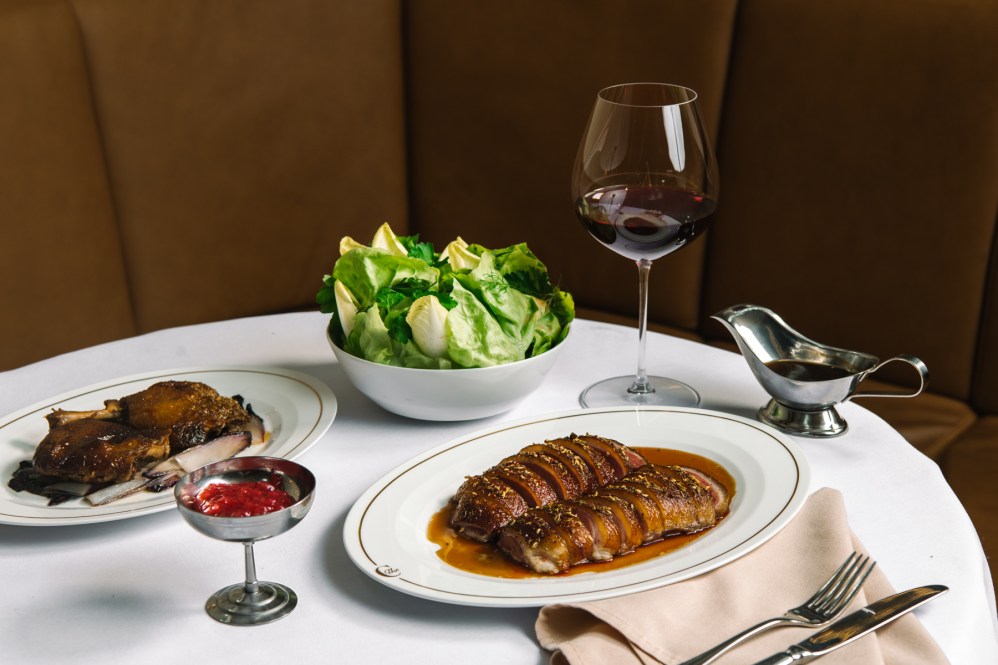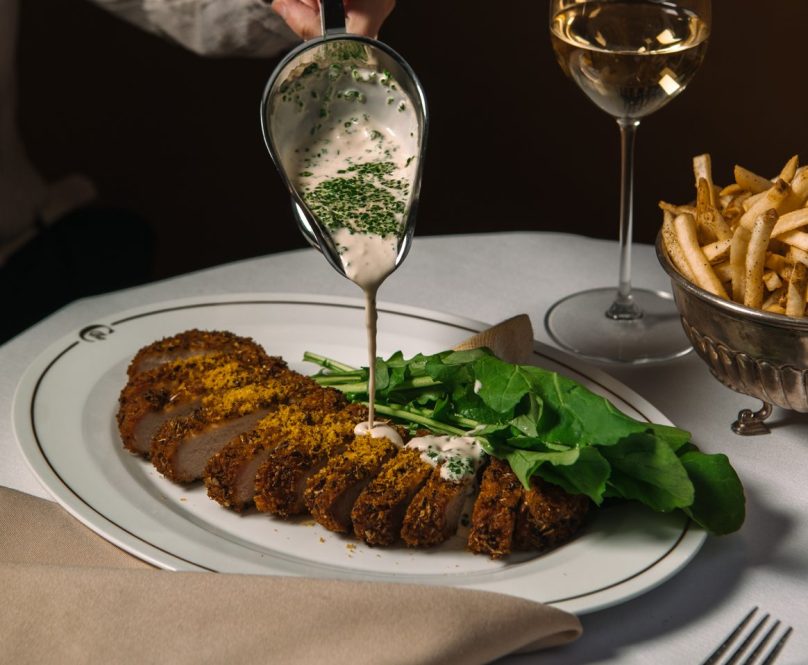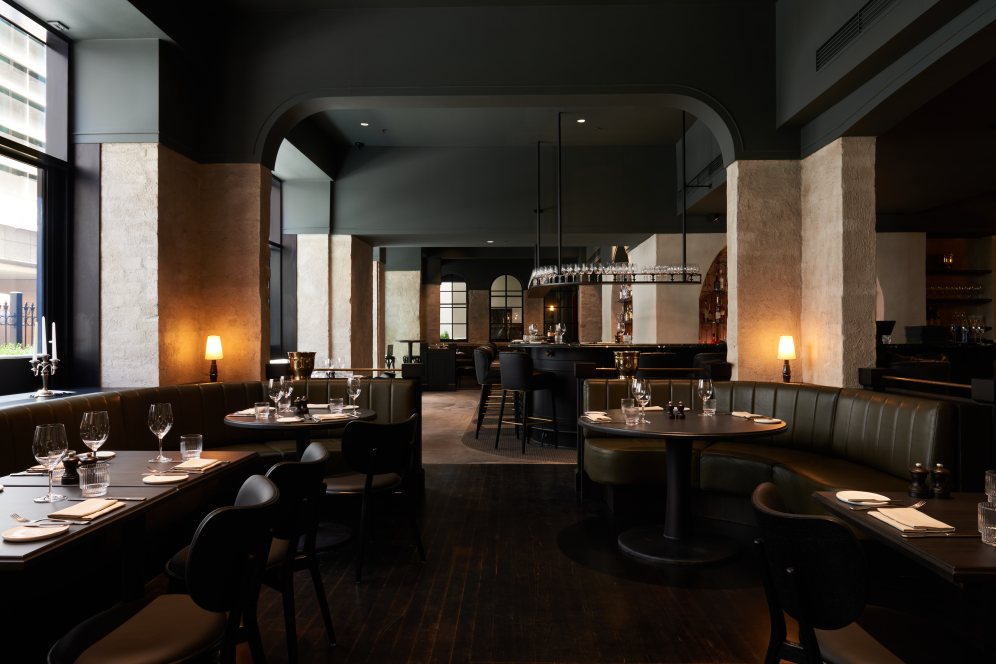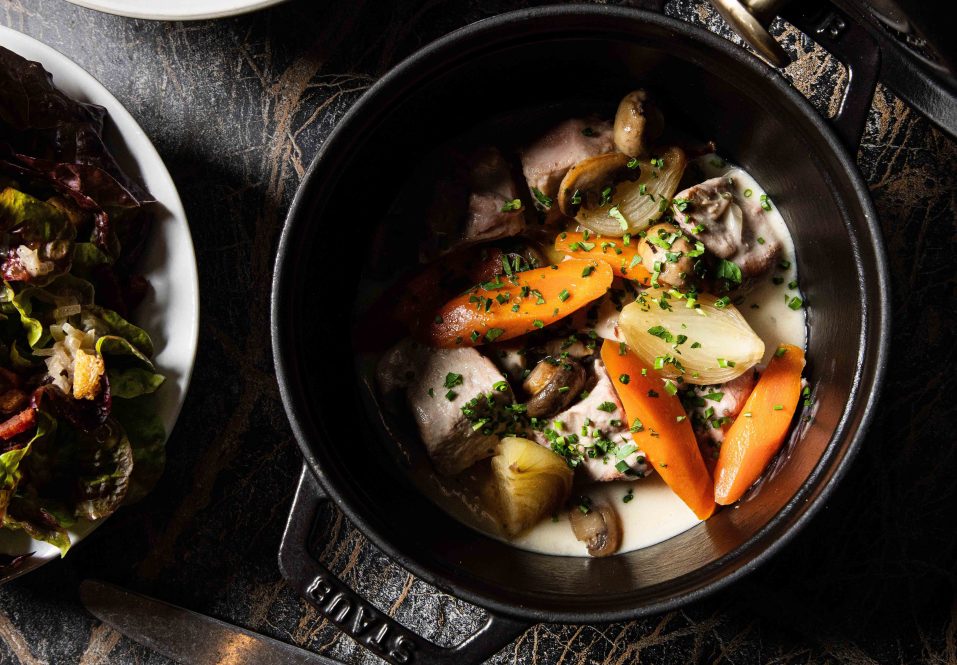Sauce is an integral element of many dishes, concepted to add layers of flavour, levels of texture and a little viscosity. Not to skip on one of its most appealing factors — that little something extra to swipe up with a piece of bread.
Learning how to make a good sauce is a foundational cooking skill and a process of discovery for chefs. And what better place to start than mother sauces when it comes to Eurocentric cooking?
French Chef Georges Auguste Escoffier wrote about six sauces in his book Le Guide Culinaire (A Guide to Modern Cookery) in 1907: velouté, bechamel, espagnole, allemande, sauce tomate and hollandaise.
The sauces are the building blocks for daughter sauces such as mornay which is derived from bechamel; supreme from velouté; demi-glace from espagnole; bearnaise from hollandaise and creole from tomate. And that’s just scratching the surface of the wide world of sauces.
Hospitality speaks to Billy Hannigan from The Charles in Sydney and Chancery Lane’s Pak Tam about learning from the best, the pressure points of making classic sauces and the various iterations of mother sauces that currently appear on their menus.
The Charles swung open its doors in Sydney’s CBD last year and epitomises all things luxe and grand. The opulent restaurant is a nod to old-world dining where desserts are wheeled around on trolleys and plates are accompanied by metal gravy boats filled to the brim with sauce.
It’s the second restaurant from Etymon Projects, which arrived on the hospitality scene with French brasserie Loulou, which Billy Hannigan spearheaded before moving across to The Charles.
Hannigan began his culinary journey with none other than Guillaume Brahimi at the two-hatted Guillaume at Bennelong. “I have been in and out of French restaurants more or less my whole career,” says Hannigan. “I did my apprenticeship over at Bennelong when I was about 15 and I was introduced to classic old-school chicken stocks, béchamels and cream sauces from an early age.

“Chicken stocks and béchamels are what you’re taught at an early age and they’re the basics. I don’t think a lot of people know how to make a great white chicken stock, which is so simple. It’s good for chefs to come through European or French restaurants to learn the foundations.”
The chef has always found himself in Eurocentric fine diners and spent several years at The Ledbury in London, refining his skills alongside Chef Brett Graham and picking up valuable sauce-related know-how. “Whether it was beef, lamb or fish sauce — everything was tasted by three to four chefs before service because everyone has a different palate,” says Hannigan. “Every sauce was finished with two to three seasonings (chives, herbs, lemon, olives or garlic) to uplift it and add more flavour before plating.”
Hannigan names chicken jus gras as one of the most impressionable sauces he learned as a budding chef. “We would get chicken bones and then brown chicken wings to make a double brown stock at The Ledbury,” he says. “Then we would get drumsticks and put them with mushrooms, garlic, shallots, peppercorns, bay leaves and thyme and cook it down for a few hours before seasoning it with Madeira and veal jus before reducing it down. It was a two- to three-day process, but the flavour was incredible. You could almost drink the sauce.”
It’s an undoubtedly laborious process that requires immense attention to detail — an oversight at any point can sabotage the entire sauce. Take the chicken, for example. A low-quality carcass will completely alter the flavour profile as can low-effort skimming. “The fat from the wing bones and drumsticks can re-emulsify into the sauce and cream it out so it won’t make a clear broth — skimming is very important and so is adding the aromatics at the right time, which really impacts the end product,” says Hannigan.
But it all boils down to purpose: sauces are simply “nice eating”, says Hannigan. “They’re so important to kitchens,” he says. “We put a jug of sauce on all the main courses so people can get a bit ‘dirty’ with eating.”

Many of the sauces currently served at The Charles are constructed from a basic white sauce and tweaked with herbs, citrus or caviar. An example is the vol-au-vent (which translates to windblown in French) that is served with a jug of frothy velouté poured tableside by front of house.
“It has roasted sweetbreads and yabbies and we make a broth with lobster heads, crab bones, saffron and tomato that we emulsify with butter,” says Hannigan. “We froth it up and it’s a nice and bubbly velouté that’s served on the side. The waiter pours it and leaves the pot on the side for guests to use at their discretion.”
Supreme sauce is another example of classic French cookery that begins as a velouté before being thickened with cream. “We finish it with tarragon and chives and we put smoked ocean trout in, which is more unusual with the pork schnitzel, but it works,” says Hannigan. The chef was also behind the creation of Loulou’s signature dish of John Dory with sauce Champagne. “We make a Champagne velouté which is simple in terms of [its composition of] equal amounts of fish stock, cream and Champagne which is reduced down and finished with caviar and chives.”
In an ideal world, every sauce would be made from scratch every day — but factors such as labour, time and space make that an impossibility for most kitchens. “There is a lot of care and effort put into them; we usually make different sauces daily,” says Hannigan. “I wish we could make everything every day, but it’s all brought to the boil before service and seasoned with alcohol or vinegar to liven it up. It’s quite labour intensive, but they’re the fundamentals of a kitchen. Of all the things to put care into…having a good sauce is essential.”

Chancery Lane Head Chef Pak Tam knows a thing or two about sauce, with the culinary talent first coming across velouté during his time at cooking school in Hong Kong. “Over the last 25 years I’ve learned from different teachers who have different principles on how to make the sauce,” says the chef.
“But all of them follow the basics and then twist it to create something unique, which is what I enjoy doing now. I’ve made the mother sauce at different fine-dining restaurants over the years including pairing it with a braised lamb neck by [the late] Joel Robuchon and I did a chicken en vessel with a chef from Restaurant Paul Bocuse, who showed me how to make a truffle and chicken velouté. Velouté is such an important base in French cooking and is a very versatile sauce.”
It plays a key role in the restaurant’s blanquette de veau, otherwise known as a French veal stew, that traditionally sees the protein simmered in a white sauce and served in a sauce velouté amped up with cream and egg. Tam’s take on the dish sees two mother sauces combined together: bechamel and velouté.
“The ingredients and method are quite basic, and it only takes around 20 minutes to make,” says the chef. “But velouté has a delicate and mild flavour, so it must be made with good-quality white stock. A good chicken stock is clear and amber in colour and has a light chicken flavour and sweetness from the mirepoix.”

The chef begins the process by melting butter over a medium–high heat before adding in flour until a blonde roux is achieved. Tam then adds one litre of warm white chicken stock to the roux, whisking to prevent lumps. “You must sieve the flour and not add it all in at once,” he says. The liquid is then brought to a simmer and cooked for 10–15 minutes.
Chancery Lane’s bechamel also begins with melting butter over a medium–high heat, with Tam sweating off onions and mushrooms and deglazing with white wine and Noilly Prat vermouth. “I reduce it to a low heat and then add the flour, whisking constantly before pouring the milk and the stock into the roux and seasoning with salt, white pepper and Dijon mustard,” he says.
The sous vide veal and accompanying baby carrots are then reheated in the sauce before the dish is finished with a flurry of mint, tarragon, parsley and chives. Mother sauces are ever-present in both modern and classic European restaurant settings, with chefs continuing to develop their saucing skills throughout their time in the kitchen — you’re never too old to learn something new (or old).
Sponsored Content

Discover Dairy Farmers’ range of shredded cheese
Sponsored by Bega

Beachfront Melbourne Club catering & restaurant opportunity
Sponsored by Future Food
Trending Now
Resources
Lorem ipsum dolor sit amet, consectetur adipiscing elit. Fusce ac ornare lectus. Sed bibendum lobortis...
Lorem ipsum dolor sit amet, consectetur adipiscing elit. Fusce ac ornare lectus. Sed bibendum lobortis...
Sign up for our newsletter
